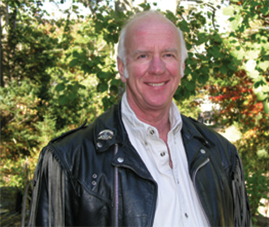The Limits of Executive Success
03/05
Scientific American magazine recently published an article Your Thoughts Can Release Abilities Beyond Normal Limits
The main idea is that abilities are most limited by our own thinking. Thinking we are limited indeed limits what we can do. Expecting beyond preconceived limits is the main doorway to performance beyond normal or expected limits. This is not new. The repeated experiment where the three teachers were told that because of their exceptional teaching skills they were to be rewarded in the next school year with a classroom of the finest students available. In all three classrooms amazing results, awards, fabulous everything. At the end of that year the three teachers were invited back to meet again with the Principal. They were told that they had not been chosen because of extraordinary teaching ability, but that their names had been drawn from a hat. So too, the students names were also drawn from a hat.
Beliefs in what the limits might be will set the level for what we will strive for and for what we will expect.
In the work environment we interact with each other and soon set our expectations. We set limits about what we expect from ourselves and from each other. Think about that and about the real life example of the teachers. Note how the teachers ‘saw’ their students. They were told they are the crème de la crème, the very best and brightest. And look at what happened. Makes one wonder what limits we have placed on others and what limits others have placed in their expectations of us and what limits I have placed upon me. Makes one wonder how the organization might perform if we raised our expectations.
Simply raising my expectations of you and being like the expectant teacher, never chastising or losing faith, but encouraging, helping, demonstrating and most of all, expecting greater, will make massive improvements in results. I like to recommend noticing my expectation of another and placing that on a line close to the left end, which is lowering expectations, imposing limits. I then notice my thinking about that person, at that level of my expectations. I pick one or two of those expectations and, in my mind, raise them. I move the pointer on that line to the right a little bit. Then I start to treat the person ‘as if’ those expectations are normal for them.
Guess what? They almost always rise to the expectation and blow the doors off the limits I had placed on them.
Now imagine a conversation with this person, having them involved in surfacing the present limits and expectations. Imagine you did this with every direct report and them with you too. Imagine agreeing on one or two expectations to be lifted and to start treating each other at the new higher level of expectation. Imagine doing this both individually and as a team. Scientific American has the expectation that big and positive things will happen. So do I.
Joseph Seiler MCC

